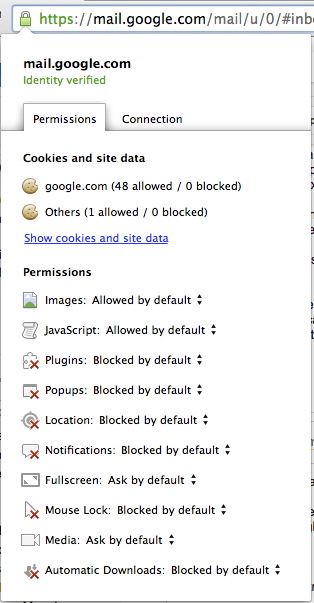- From: Chris Palmer <palmer@google.com>
- Date: Thu, 18 Dec 2014 13:41:38 -0800
- To: Monica Chew <mmc@mozilla.com>
- Cc: "public-webappsec@w3.org" <public-webappsec@w3.org>, blink-dev <blink-dev@chromium.org>, security-dev <security-dev@chromium.org>, "dev-security@lists.mozilla.org" <dev-security@lists.mozilla.org>
- Message-ID: <CAOuvq22+Ch6Ua=q_HLKUMGoLKR2uqBgxk=1YYhQAE2Xi1XHODw@mail.gmail.com>
On Thu, Dec 18, 2014 at 1:18 PM, Monica Chew <mmc@mozilla.com> wrote: > Thanks for the numbers. That's a significant gap (58% vs 33%). Do you have > any idea why this might be the case? I don't, unfortunately. I think we (Chrome) are going to try measuring HTTPS vs. HTTP deployment in other ways too, and then we might see discrepancies. > I understand the desire here, but a passive indicator is not going to change > the status quo if it's shown 42% of the time (or 67% of the time, in > Firefox's case). That's part of why we plan to gate the change on increasing HTTPS adoption. Gervase liked that idea, too. > Other passive indicators (e.g., Prop 65 warnings if you > live in California, or compiler warnings that aren't failures) haven't > succeeded in changing the status quo. Citation needed...? (If you're arguing that we should all compile with -Werror, I'll surely agree with you. Chrome does. But I assume you did not mean to suggest we should do the equivalent for HTTP navigation, at least not yet...) > Again, what's the action that typical > users are going to take when they see a passive indicator? First, keep in mind that you can't argue that showing the passive indicator will be both ignored and crying wolf. It's one or the other. Which argument are you making? That said, * Those few users who do look at it will at least be able to discern the truth. Currently, they cannot. * Site operators are likely to discern the truth, and may be motivated to deploy HTTPS, if they feel that their user base might demand it. (Complementarily, as site operators seek to use more powerful, app-like features like Service Workers, they will increasingly deploy HTTPS because they have to.) * As we make the web more powerful and more app-like, we (Chrome) seek to join the "what powerful permissions does this origin have?" views and controls with the "by the way, how authentic is this origin?" view. (See attached Chrome screenshot, showing that they are already significantly merged. In my other window I am working on a patch to make this easier to use.) As users become increasingly aware of these controls, they may become increasingly aware of the authenticity marking. And then they may make decisions about granting permissions differently, or at least with more information. Basically, "how real and how powerful is this origin" is gradually becoming a first-class UX piece. But, fundamentally, we owe it to users to tell the truth. I don't see that the status quo is defensible.
Attachments
- image/png attachment: Screen_Shot_2014-12-18_at_1.29.37_PM.png

Received on Thursday, 18 December 2014 21:42:05 UTC